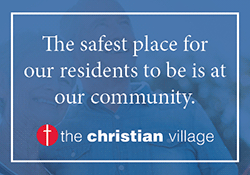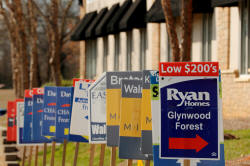U.S. housing market floats back to earth
 Send a link to a friend
Send a link to a friend
 [July 23, 2021] By
Stephen Culp [July 23, 2021] By
Stephen Culp
NEW YORK (Reuters) - The U.S. housing
market appears to be straining under the weight of its own
pandemic-driven success. Recent data shows the sector is returning from
the stratosphere and coming back to pre-COVID levels, as evidenced by a
slew of data released this week.
While for much of the pandemic a rush to suburbia made the home and real
estate stars of the recovery, the resulting plunge in inventory and
dearth of building supplies have launched home prices beyond the grasp
of many potential buyers, particularly at the lower end of the market.
"The housing market isn't caving just yet," said Peter Cardillo, chief
market economist at Spartan Capital Securities in New York. "Have we
reached a peak? Thatís a possibility, but worst case scenario, I see a
leveling off."
The best news of the week for investors was delivered on Thursday by the
National Association of Realtors (NAR), which reported that sales of
previously owned homes rose 1.4% to 5.86 million units in June at a
seasonally adjusted annualized rate, although the rebound was weaker
than expected.

The number undershot consensus by 40,000 units, and followed May's
downwardly-revised 1.2% decline.
Graphic: Existing home sales: https://graphics.reuters.com/USA-STOCKS/movanmkqkpa/ehs.png
The inventory drought has provided sturdy support for homebuilding, but
that support appears to be on the wane.
While groundbreaking on new residential homes increased by 6.3% in June,
building permits, a more forward-looking indicator, dropped 5.1% to an
eight-month low.
With these moves, starts and permits returned to pre-pandemic levels.
On Monday, the National Association of Homebuilders reported builder
sentiment softening, as higher input costs and rising home prices appear
to be denting the traffic of potential homebuyers.
Graphic: NAHB: https://graphics.reuters.com/USA-STOCKS/yxmvjzzwdvr/nahb.png
[to top of second column] |

Real estate signs advertise new homes for sale in multiple new
developments in York County, South Carolina, U.S., February 29,
2020. REUTERS/Lucas Jackson/File Photo

The most recent data shows an annual increase of 14.9% in the Case-Shiller's
20-city composite home price index, and NAHB's traffic of potential buyers -
while still well above pre-pandemic levels - off 15.6% from November's apex.
Graphic: Home prices and potential buyer traffic: https://graphics.reuters.com/USA-STOCKS/gkvlgmgblpb/pricesbuyers.png
Indeed, mortgage demand dropped by 4% last week, according to the Mortgage
Bankers Association (MBA). Applications for loans to purchase homes are down 18%
from the same week last year.
Graphic: MBA: https://graphics.reuters.com/USA-STOCKS/movanmnwwpa/mba.png
The equities market, the most forward-looking indicator of them all, also
reflects a bit of fading luster for housing stocks.
Through much of the pandemic the group outperformed the broader market, even as
much of the economy struggled with the effects of social distancing mandates
that spawned an exodus from the cites to more spacious properties in the suburbs
and beyond.
Over the last 12 months, the S&P 1500 Homebuilding index and the Philadelphia SE
Housing index are up 36.2% and 31.2%, respectively, more or less in line with
the S&P 500's 33.0% advance over the same time period.
Graphic: Housing stocks: https://graphics.reuters.com/USA-STOCKS/egpbknyogvq/hgx.png
(Reporting by Stephen Culp; Editing by Alden Bentley and Sonya Hepinstall)

[© 2021 Thomson Reuters. All rights
reserved.] Copyright 2021 Reuters. All rights reserved. This material may not be published,
broadcast, rewritten or redistributed.
Thompson Reuters is solely responsible for this content. |